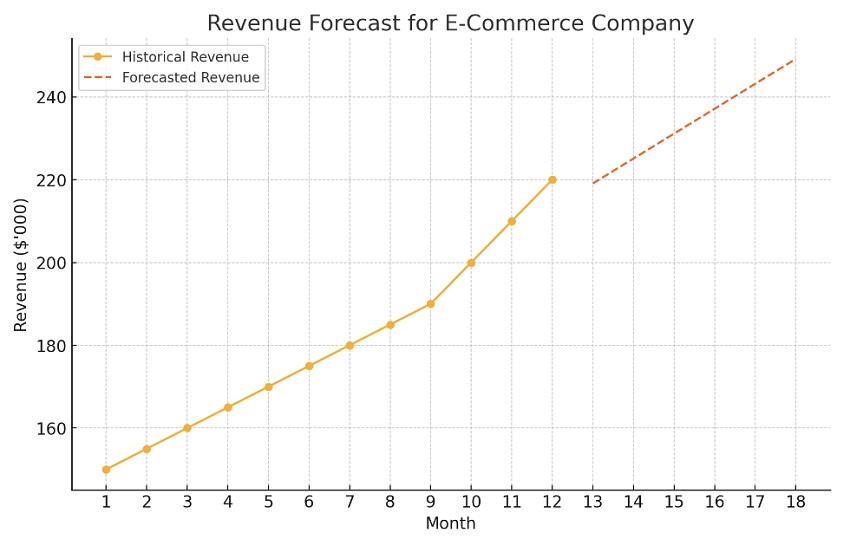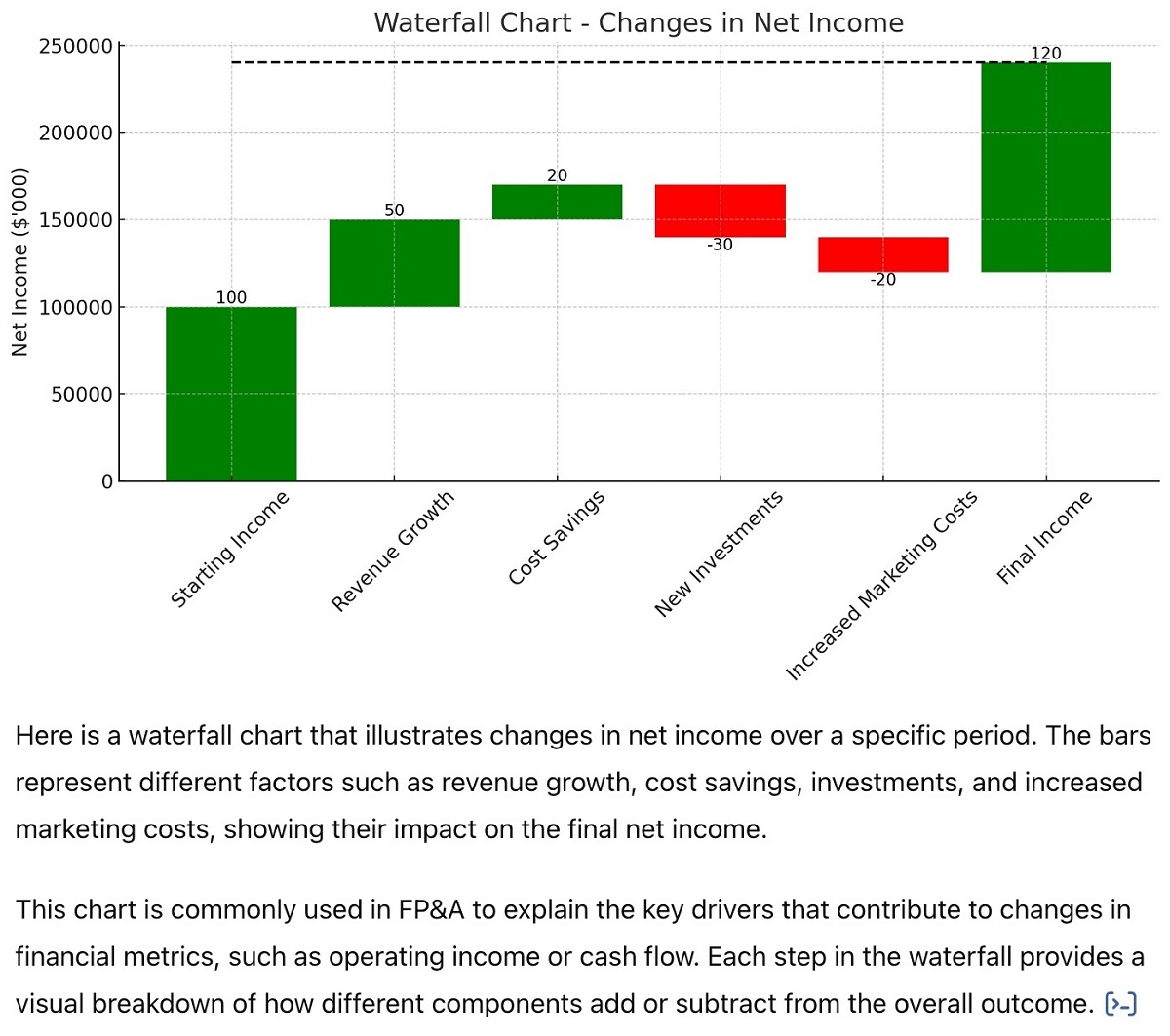In this video, we are exploring the case study of a pharmaceutical company that leveraged AI/ML...

In the rapidly evolving world of finance, FP&A professionals are increasingly required to go beyond traditional number-crunching and embrace a more strategic role within their organisations. One of the core skills essential for success in this domain is financial analysis and forecasting. Understanding historical financial data and identifying trends form the backbone of building predictive models that leverage Artificial Intelligence (AI) to forecast future performance. These insights allow FP&A teams to make informed decisions that drive business growth and optimise resource allocation.
Equally important is data management and quality assurance. In an era where data is abundant, the ability to manage and ensure data quality is crucial. Reliable and clean data is the foundation of any effective analysis, particularly when employing AI techniques. Without accurate data, even the most sophisticated AI models can lead to erroneous conclusions. Furthermore, strong business acumen and strategic thinking are vital for aligning AI-driven insights with organisational goals. FP&A professionals must understand the broader business context to ensure that data science projects support organisational strategic objectives. Coupled with excellent communication and storytelling skills, they can effectively convey complex data insights to stakeholders, transforming data into actionable strategies that drive success.
But how can FP&A professionals get started with AI and data science?
AI and Data Science: Ready, Set, Go
For many FP&A professionals, the realms of AI and data science may seem daunting, often associated with complex algorithms and computer science jargon. However, technological advancements over the past decade have democratised these fields, making them more accessible to professionals from various backgrounds. The introduction of user-friendly tools and platforms has enabled finance teams to harness the power of Artificial Intelligence even without extensive technical expertise.
The emergence of conversational AI tools like ChatGPT has revolutionised how professionals interact with data. Such tools allow FP&A professionals to easily access and analyse vast amounts of information by simply asking questions. AI-driven platforms can significantly enhance productivity and decision-making processes by providing insights and suggestions intuitively.
Moreover, many software solutions now offer built-in AI capabilities tailored to financial analysis. For example, Microsoft Excel, a staple tool for FP&A professionals, has integrated features like Power Query and AI-driven data visualisation tools. These enhancements allow users to perform sophisticated analyses with minimal learning curves. Additionally, platforms like Tableau and Power BI provide drag-and-drop interfaces, enabling the creation of dynamic dashboards and visualisations that bring data insights to life.
Practical Steps for Implementation
For FP&A teams looking to integrate AI and data science into their workflows, starting small is a practical approach. Identifying specific areas where AI can add value, such as automating repetitive tasks or enhancing forecasting accuracy, can provide quick wins and build momentum for broader adoption. Leveraging existing software with AI capabilities ensures a smooth transition, as professionals can work within familiar environments while gradually incorporating new technologies.
Ensuring data quality is another critical step in this journey. High-quality, reliable data forms the basis for accurate analysis and predictions. Investing in robust data management practices and tools will pay dividends in the long run, as it enhances the effectiveness of AI models and reduces the risk of errors. Additionally, developing a solid understanding of statistical analysis and modelling will empower FP&A professionals to confidently interpret and utilise AI-driven insights.
Integrating AI and data science into FP&A processes can seem overwhelming at first. However, professionals can start leveraging these technologies quickly and effectively, provided they have the right tools and approach. Here are some practical steps to help FP&A teams begin their AI journey:
1. Leverage AI Tools like ChatGPT for Analysis
One of the easiest ways for FP&A professionals to start using Artificial Intelligence is by incorporating tools like ChatGPT into their workflow. ChatGPT can serve as a virtual assistant, providing insights and advice on various aspects of financial analysis. For instance, you can ask ChatGPT for recommendations on data visualisation techniques, tips on interpreting complex datasets, or strategies for improving forecasting accuracy. Its natural language processing capabilities make it easy to obtain relevant information and guidance without extensive technical knowledge.
2. Utilise Microsoft Copilot
Microsoft Copilot is another powerful tool that FP&A professionals can use to enhance their data analysis capabilities. Integrated within Microsoft 365 applications like Excel, Word, and PowerPoint, Copilot uses AI to assist with tasks such as data analysis, report generation, and presentation creation. For example, in Excel, Copilot can help automate data cleaning, suggest formulae, and generate charts and graphs based on your data. It allows finance teams to perform sophisticated analyses and create compelling presentations within the familiar Microsoft environment.
3. Explore ChatGPT Analytics
ChatGPT Analytics is an innovative tool that enables FP&A professionals to conduct data analysis through conversational interactions. By asking questions or inputting data in natural language, users can quickly obtain insights and visualisations tailored to their specific needs. This approach simplifies the analytical process, allowing FP&A professionals to focus on strategic decision-making rather than getting bogged down in technical details. With ChatGPT Analytics, even those with limited experience in data science can harness the power of AI to uncover meaningful trends and patterns in their data.
4. Adopt SaaS Solutions for Data Analytics
Software as a Service (SaaS) platforms specifically designed for data analytics provide an accessible entry point for FP&A teams looking to incorporate AI into their processes. These platforms, such as Tableau, Power BI, and Looker, offer user-friendly interfaces that enable professionals to perform complex analyses and create interactive dashboards. By leveraging cloud-based analytics solutions, FP&A teams can access advanced features like real-time data integration, Machine Learning models and Predictive Analytics while minimising the need for extensive in-house technical resources.
The integration of AI and data science into FP&A processes represents a significant opportunity for finance professionals to elevate their strategic impact within organisations. By embracing these technologies and building the necessary skills, FP&A teams can transform data into actionable insights, drive business growth and enhance their role as strategic partners in today's competitive landscape.
Utilising AI for Analytics
The graph below is a forecast generated by ChatGPT in Python. It illustrates how FP&A professionals can adopt advanced analytics techniques without the need for expert technical knowledge.

Figure 1: A sample graph with revenue forecast metrics produced by ChatGPT
The example is not restricted to forecasting, since AI can also be used for other types of analytics and ideation. FP&A professionals can even ask a direct advice about what is possible given a financial dataset and come up with ideas or ask the AI to detect patterns in data.

Figure 2: Sample waterfall chart produced and analysed by ChatGPT
Conclusion: AI for FP&A Productivity
AI is more than just a productivity tool; it is a catalyst for transformation in FP&A. By leveraging AI, FP&A professionals can automate mundane tasks, streamline complex analyses, and unlock deeper insights from data, allowing them to focus on strategic decision-making and value creation. The integration of AI empowers finance teams to enhance forecasting accuracy, optimise resource allocation, and respond more swiftly to changing business environments.
To get started, FP&A professionals should:
- Identify Key Areas for AI Integration: Focus on specific tasks where AI can add value, such as automating repetitive processes or enhancing forecasting accuracy.
- Invest in Training and Skill Development: Encourage team members to develop skills in data analysis and visualisation through online courses and workshops.
- Start with Small Projects: Begin with manageable projects to demonstrate the value of AI and data science, gradually expanding their use across the organisation.
- Foster a Culture of Innovation: Promote a mindset of continuous learning and experimentation, encouraging team members to explore new tools and techniques.
By taking these practical steps, FP&A professionals can harness the power of AI and data science, transforming their roles into strategic Business Partners and driving meaningful outcomes for their organisations.
Subscribe to
FP&A Trends Digest

We will regularly update you on the latest trends and developments in FP&A. Take the opportunity to have articles written by finance thought leaders delivered directly to your inbox; watch compelling webinars; connect with like-minded professionals; and become a part of our global community.






